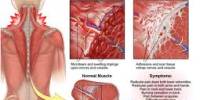Alzheimer’s disease has been on the rise around the world in recent years, and it is rarely recognized at an early stage when it can still be properly managed. KTU researchers used artificial intelligence to see if human-computer interfaces might be modified to help persons with memory problems recognize a visible object in front of them.
Rytis Maskeliūnas, a researcher from Kaunas University of Technology’s (KTU) Department of Multimedia Engineering, believes that classifying information displayed on the face is an everyday human function:
“While communicating, the face, “tells” us the context of the conversation, especially from an emotional point of view, but can we identify visual stimuli based on brain signals?”
The visual processing of a person’s face is intricate. We can deduce information such as a person’s identify or emotional condition by analyzing their faces. The study’s goal was to determine a person’s ability to receive contextual information from the face and how they react to it.
Alzheimer’s disease is a progressive brain disease that wreaks havoc on memory and thinking skills, as well as the capacity to carry out even the most basic tasks. Symptoms of late-onset type occur in the majority of patients with the disease in their mid-60s.
Early-onset Alzheimer’s disease strikes people between the ages of 30 and 60, and it is extremely rare. The most common cause of dementia in elderly people is Alzheimer’s disease. Alzheimer’s disease is more common in older people, although it is less common in younger people.
Of course, in addition to the technical requirements, there should be a community environment focused on making life easier for people with Alzheimer’s disease. Still, in my personal opinion, after five years, I think we will still see technologies focused on improving physical function, and the focus on people affected by brain diseases in this field will only come later.
Rytis Maskeliūnas
Face can indicate the first symptoms of the disease
According to Maskeliūnas, many studies show that examining facial muscle and eye movements can help diagnose brain diseases because degenerative brain disorders affect not only memory and cognitive functions, but also the cranial nervous system, which is linked to the above facial (especially eye) movements.
The study confirmed whether a patient with Alzheimer’s disease visually processes visible faces in the brain in the same way as persons without the condition, according to Dovilė Komolovaitė, a graduate of KTU Faculty of Mathematics and Natural Sciences who co-authored the study.
Scientists are still baffled as to what causes Alzheimer’s disease. There is most likely no single cause, but rather a combination of circumstances that influence each person differently. Memory issues are usually one of the early signs of Alzheimer’s disease, though the severity of the symptoms varies from person to person.
“The study uses data from an electroencephalograph, which measures the electrical impulses in the brain,” says Komolovaitė, who is currently studying for a master’s degree in Artificial Intelligence program at the Faculty of Informatics.
The experiment was carried out on two groups of people: those who were healthy and those who had Alzheimer’s disease. Alzheimer’s disease is not a natural component of the aging process. Memory issues are often one of the early symptoms of Alzheimer’s disease and other dementias.
“The brain signals of a person with Alzheimer’s are typically significantly noisier than in a healthy person,” says Komolovaitė, emphasising that this correlates with a reason which makes it more difficult for a person to focus and be attentive when experiencing the symptoms of Alzheimer’s.
Photos of people’s faces were shown during the study. The study selected a group of older people made up of women over 60 years of age:
“Older age is one of the main risk factors for dementia, and since the effects of gender were noticed in brain waves, the study is more accurate when only one gender group is chosen.”
During the study, each participant completed up to an hour of tests in which they were presented photographs of human faces.
According to the researcher, these photographs were picked based on various criteria: neutral and scared faces are shown in the analysis of emotional influence, and known and randomly chosen people are indicated to the study participants in the analysis of familiarity factor.
Participants in the study were instructed to click a button after each stimulus to indicate whether the face exhibited is inverted or correct, in order to determine whether a person sees and understands a face correctly.
“Even at this stage, an Alzheimer’s patient makes mistakes, so it is important to determine whether the impairment of the object is due to memory or vision processes,” says the researcher.
Inspired by real-life interactions with Alzheimer’s patients
Maskeliūnas explains that his involvement with Alzheimer’s disease began with a relationship with the Huntington’s Disease Association, which exposed him to the reality of these various neurological disorders.
The researcher also had direct contact with Alzheimer’s patients: “I saw that the diagnosis is usually confirmed too late when the brain is already irreversibly damaged. Although there is no effective cure for this disease, the process can be paused and sustained by gaining some healthy years of life.”
We can now see how human-computer interaction has been customized to help those with physical limitations. It’s not a new concept to control a robotic hand with “thought” or to have a disabled person write a text by envisioning letters. Trying to comprehend the human brain is one of the most difficult tasks we face today.
The researchers used data from ordinary electroencephalograph equipment in this investigation; however, Maskelinas notes that in order to produce a useful tool, data from invasive microelectrodes, which can more accurately monitor the activity of neurons, would be preferable. This would significantly improve the AI model’s quality.
“Of course, in addition to the technical requirements, there should be a community environment focused on making life easier for people with Alzheimer’s disease. Still, in my personal opinion, after five years, I think we will still see technologies focused on improving physical function, and the focus on people affected by brain diseases in this field will only come later,” says Maskeliūnas.
According to master’s student Komolovaitė, a clinical evaluation with the assistance of medical colleagues is required, therefore this stage of the process would take a long time: “If we want to use this test as a medical tool, a certification process is also needed.”
















